Aside from quality time spent with loved ones, cranberry sauce is my favorite thing about Thanksgiving. Seriously. Not only is it an essential component of the traditional holiday meal, the leftovers have all sorts of delicious uses beyond turkey sandwiches. It’s a terrific topping for various breakfast foods – personally I’m fond of stirring it into my morning yogurt or oatmeal – and you can make muffins with it, spread it on a grilled cheese sandwich (or serve it over baked brie!), use it as an accompaniment to pork, chicken, tofu or tempeh, or even puree it into a rich syrup for drizzling over pancakes, waffles and ice cream. Now to be clear, I’m not talking about the jellied kind that plops out of a can in one solid piece (though there is something nostalgically comforting about that stuff and the silly “sploosh” noise it makes as it slides out). Nope, I’m talking about sauce made from whole, simmered cranberries. It should be thick and sticky with a prominent cranberry flavor, and sufficient tartness to make itself known without being puckery. There I go making up words again, but you know what I mean, right?
You can make a perfectly serviceable sauce with nothing more than cranberries, sugar and a touch of orange zest or juice (and don’t forget that essential pinch of salt), but I like to make mine more complex, starting with the liquid. You always need at least a little to cook down the cranberries, and orange juice, cranberry juice and water are the most common choices. But it’s the holidays and I love a good red, so my number-one choice is wine. My favorite varietal of wine to use in this recipe is an old vine zinfandel because the bold, extracted fruit, soft tannins, and low acidity play off the cranberry so well, but you can also use a California cabernet, a New World-style Pinot Noir, or even a ruby port (though I’d cut back on the sugar if you opt for port).
The tart, fruity flavor of cranberries pairs well with aromatic, warm spices. We don’t want to add too much because the cranberries should be front and center, but used judiciously the right spices can enhance both the berries and the wine. In this recipe I use whole spices instead of ground – fresh ginger, cardamom pods, whole cloves, cinnamon stick and whole star anise – which helps keep the spices from overpowering the sauce. You simmer them in the liquid just long enough to perfume it, then strain them out before adding the cranberries. They leave behind their wonderful flavors and aromas, but you’re not eating a mouthful of ground spice. The same thing goes for the hint of orange in this sauce – instead of adding juice to the liquid, I simmer a couple of strips of aromatic zest along with the spices, then strain those out as well. I’m not a huge fan of very orange-y cranberry sauce but I do appreciate a hint of the flavor.
The final essential component of any cranberry sauce is the sweetener, and it took me a long time and many, many test batches to hit on the right combination of ingredients in proportions that I think suit the cranberries best. I don’t use a lot of white sugar in my kitchen, and when I do I opt for evaporated cane juice or organic cane sugar which aren’t any “healthier” for you per se, but they are less chemically processed than the stuff that comes in the white, yellow, and blue box (you know the one I’m talking about). My avoidance of white sugar isn’t just about health, I’m really not crazy about the flavor either – I think it’s boring and plain, and provides a very one-note sweetness. But some recipes really do benefit from at least a little white sugar, and this is one of those recipes. The proportion is much lower than that of other cranberry sauce recipes, but it’s there. In addition to the evaporated cane sugar I add maple syrup and pomegranate molasses, both of which contribute more layers of complex flavor and sweetness, and they complement the cranberries and aromatics perfectly.
After a friend remarked that this photo of the simmering syrup looked like a Van Gogh, I had to include it in the post. I’m no artist, but that is one pretty pot of wine and aromatics.
Here’s the finished sauce. Isn’t it gorgeous? Believe it or not, despite my rather detailed explanation this sauce is crazy simple to make and mostly hands off – just let everything simmer and watch the magic happen. Now go make some cranberry sauce!
- 750 ml (one bottle or 3 ⅛ cups) red zinfandel or other bold, fruity red wine
- 150 g (¾ cup) evaporated cane juice or granulated sugar
- 120 ml (½ cup) maple syrup
- 60 ml (¼ cup) pomegranate molasses*
- ½ -inch piece peeled fresh ginger, sliced
- 6 lightly crushed cardamom pods
- 4 whole cloves
- 1 cinnamon stick
- 1 small star anise
- 2 strips orange zest (about 1 in x 3 in each)
- Scant ½ tsp Kosher salt
- 24 oz (2 bags) fresh or frozen cranberries, rinsed and picked over
- In a medium saucepan over medium-high heat, combine all ingredients except cranberries. Stir to dissolve sugar, and bring to a boil. Reduce heat and keep at a hard simmer** for about 20 minutes, stirring occasionally, until reduced by one third (you should be able to gauge this by looking at the inside of the pan - there will be a ring/stain around it to indicate the level where it began). When strained, you’ll have about 710-725 ml or 3 cups of liquid.
- Strain liquid into a large saucepan with a lid. Add cranberries, cover partially with lid, and cook over medium heat, stirring occasionally, until cranberries burst and begin to break down, about 15 minutes. Remove cover and continue to simmer for another 10-15 minutes or until you reach the desired consistency (I usually go the full 15 or longer because I like a really thick, sticky sauce). Taste and add a bit more sweetener if desired.
- Transfer sauce to jars (or other lidded containers) and cool completely. Cover and refrigerate for up to 2 weeks, or freeze for 1-2 months (if freezing I recommend bags, not jars).
**The liquid should be continuously active with lots of small to medium bubbles, but not at a rolling, violent boil with giant bubbles.
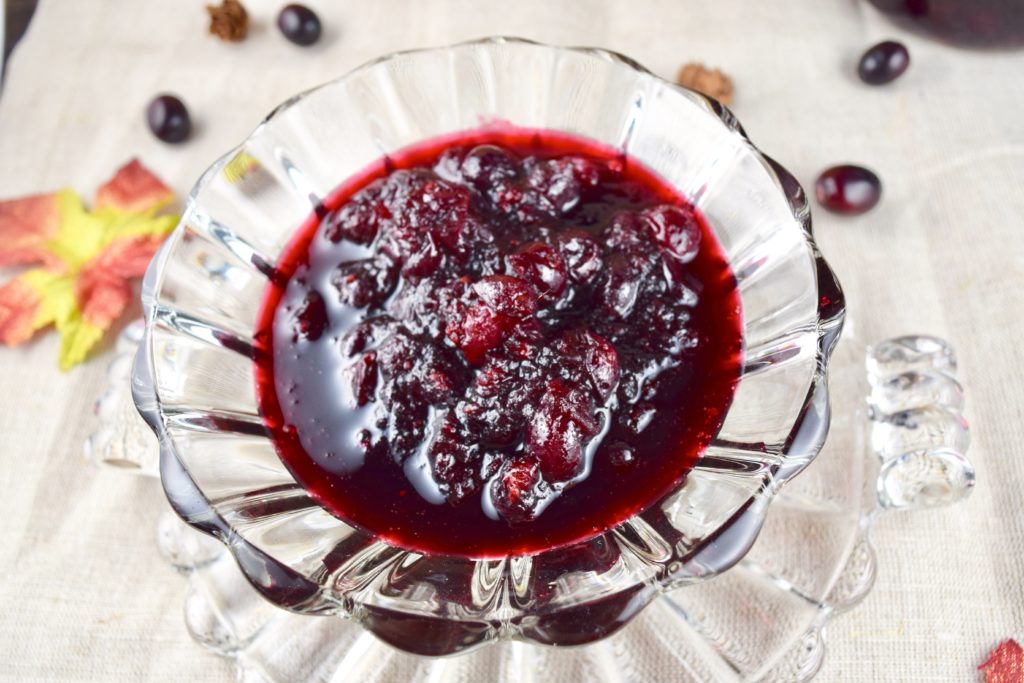
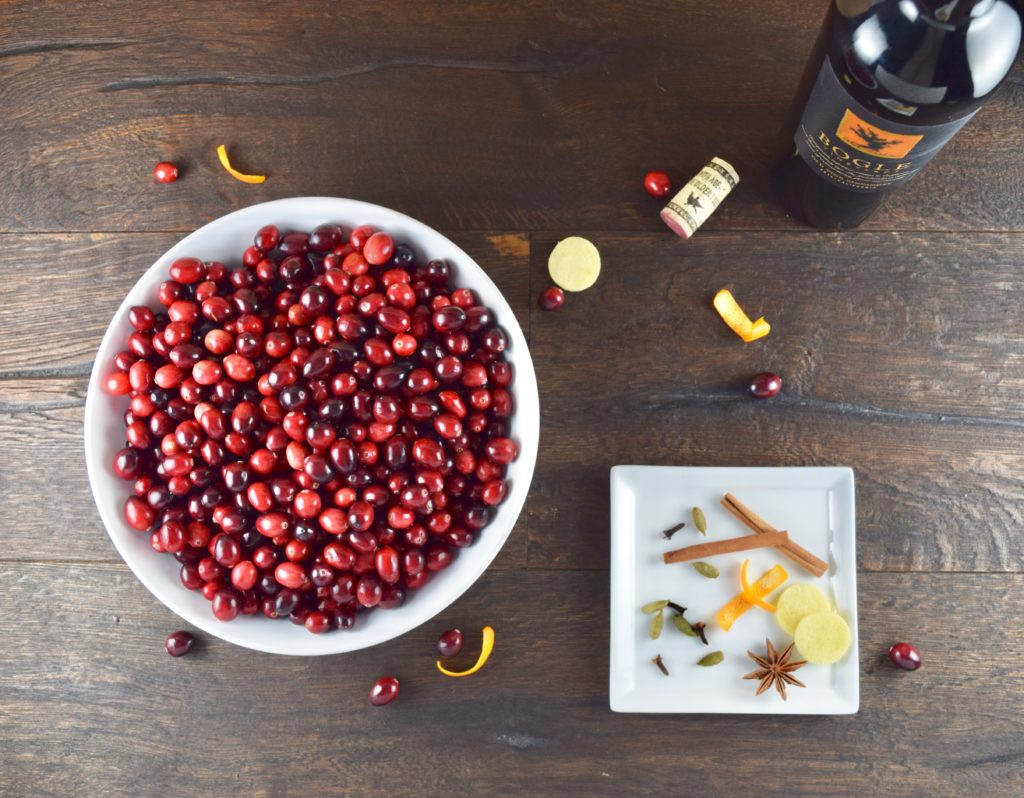
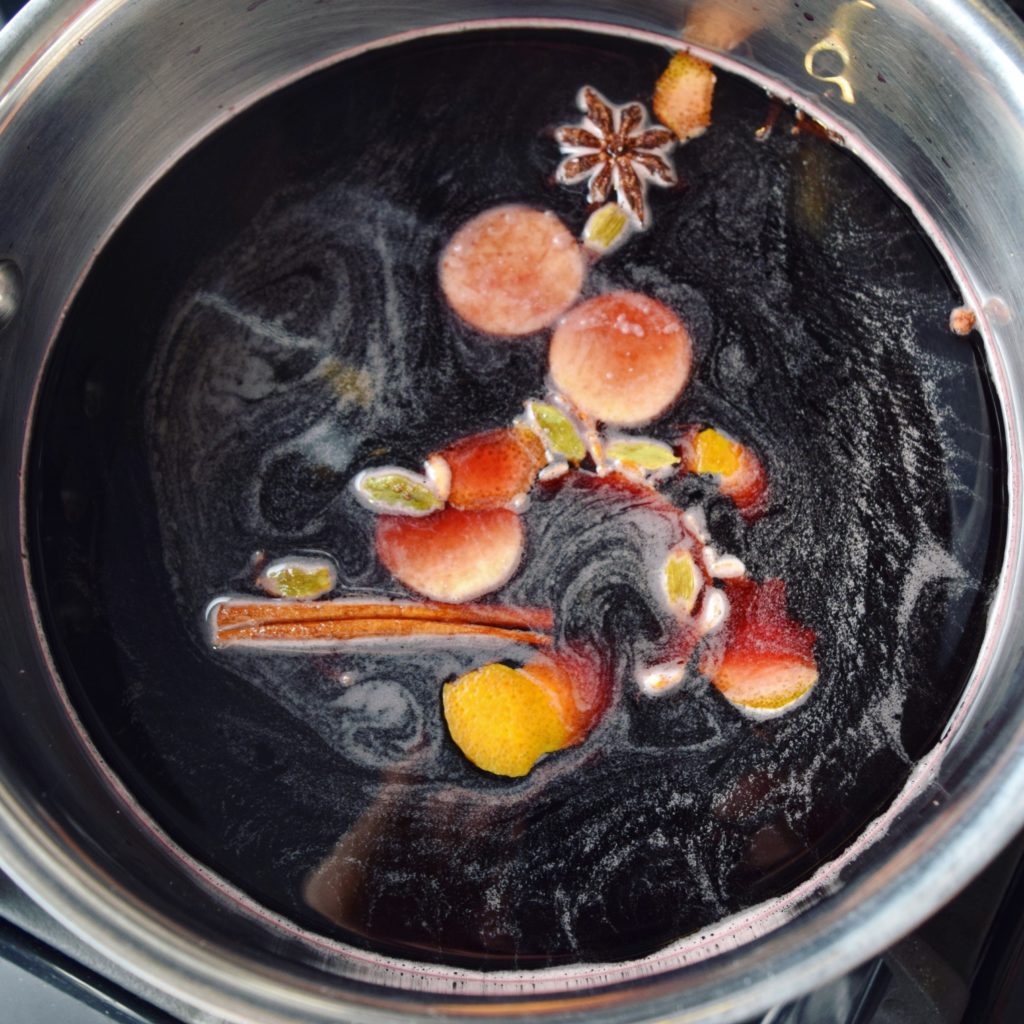
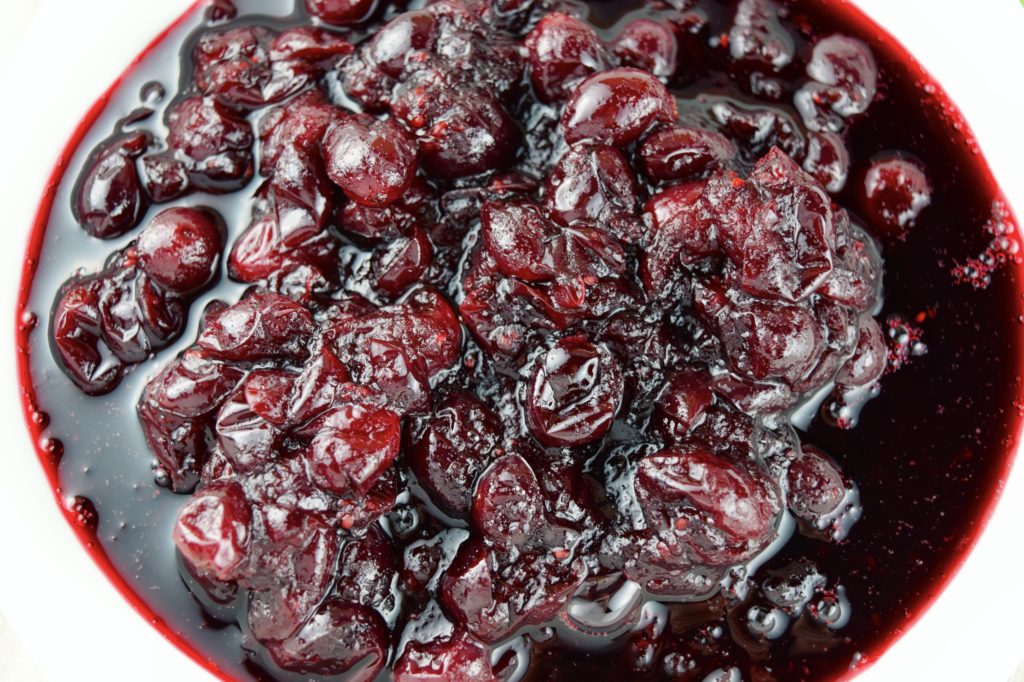
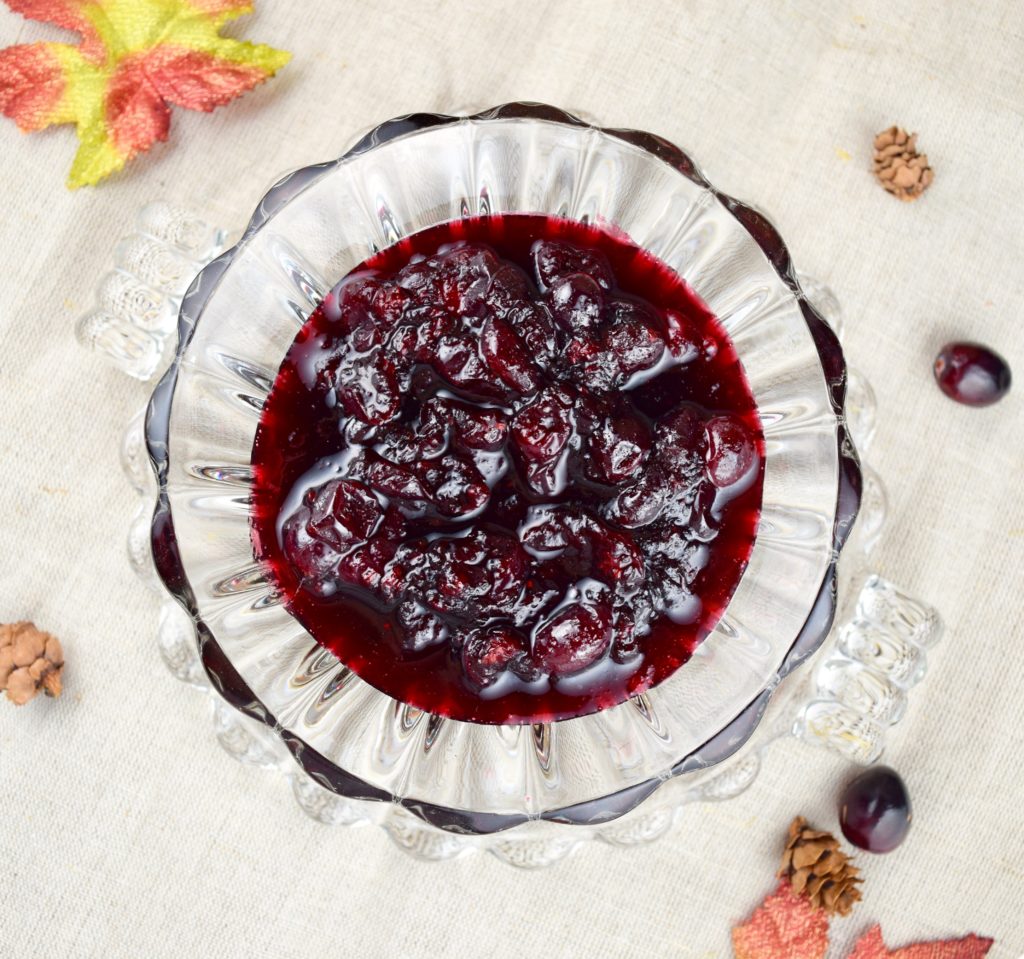


Leave a Reply